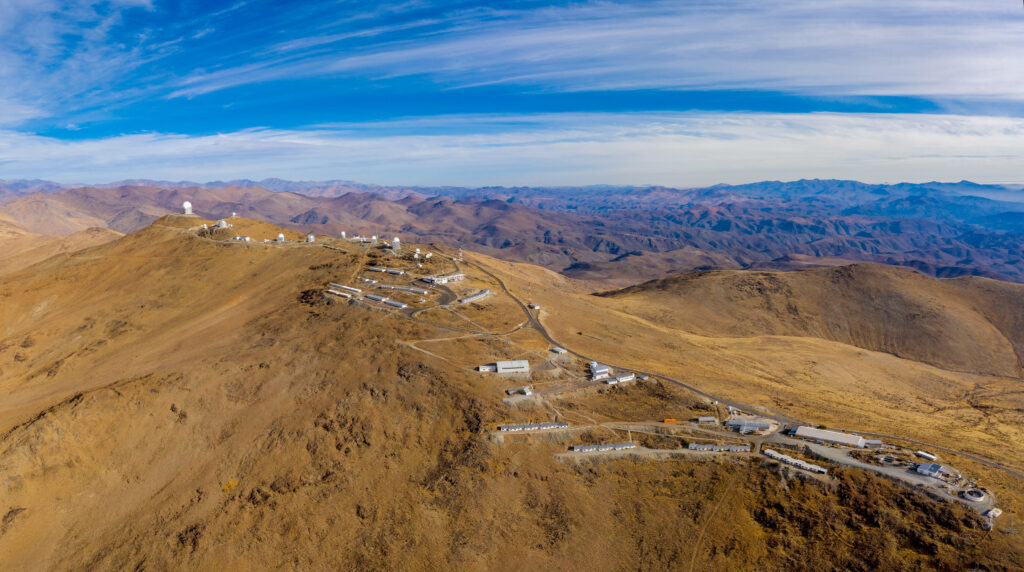On the edge of the Atacama Desert, 600 km north of Santiago, at an altitude of 2400 meters, this seemingly small village in the desert is located. This is the La Silla Observatory, the first facility of the European Southern Observatory (ESO) in Chile.

The image shows a number of astronomical instruments installed in La Silla, including a 3.6-meter telescope and an ESO New Technology Telescope (NTT). Several national telescopes like ExTrA and the Danish 1.54-meter telescope also got into the photo.
The 3.6-meter telescope began operating in 1977 as La Silla’s flagship instrument. Since then, it has been repeatedly upgraded and received new equipment. One of the most important upgrades was the installation of the HARPS receiver. This is a high-precision spectrograph designed to search for exoplanets by the method of radial velocities. This was it who helped to find a rocky Earth-mass planet orbiting the nearest star to the Sun, Proxima Centauri.
Commissioned in 1989, NTT became a key milestone in the creation of modern observatories equipped with an active optics system. The essence of the technology is to change the shape of the telescope mirror to compensate for distortions caused by its weight. NTT became the first telescope in history in which such corrections were carried out in real time during observations.
La Silla needs energy to work. A photovoltaic installation with a capacity of 1.7 megawatts is responsible for it. The energy is generated by an array of solar panels, spread over more than 100 thousand m2 in the Atacama Desert.
According to https://www.eso.org
Follow us on Twitter to get the most interesting space news in time
https://twitter.com/ust_magazine

